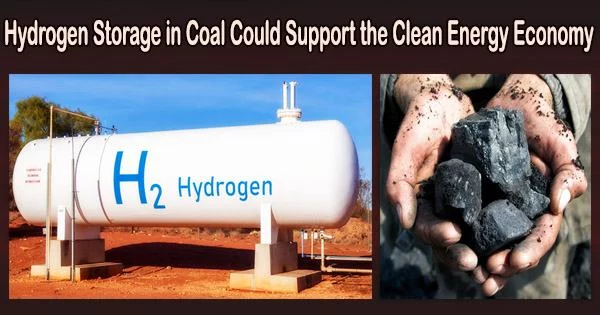Coal may wind up being an unexpected destination in the effort to create hydrogen as a clean energy source that might reduce our reliance on fossil fuels. In order to overcome a significant obstacle in creating a clean energy supply chain, a group of Penn State researchers discovered that coal may be a potential option to store hydrogen gas, similar to how batteries store energy for later use.
“We found that coal can be this geological hydrogen battery,” said Shimin Liu, associate professor of energy and mineral engineering at Penn State. “You could inject and store the hydrogen energy and have it there when you need to use it.”
The three most energy-intensive sectors of our economy transportation, electricity production, and manufacturing have great potential for using hydrogen as a clean-burning fuel. But much work remains to build a hydrogen infrastructure and make it an affordable and reliable energy source, the scientists said.
This includes finding a more affordable and effective method of storing hydrogen. The ability of geologic formations to store significant quantities of hydrogen to meet the peaks and valleys as daily or seasonal variations in energy demand makes them an appealing possibility, according to the scientists.
“Coal is well-studied, and we have been commercially producing gas from coal for almost a half-century,” Liu said. “We understand it. We have the infrastructure. I think coal would be the logical place to do geological hydrogen storage.”
In the energy transition, it’s really coal communities that have been the most impacted economically. This is certainly an opportunity to repurpose the coal region. They already have the expertise the energy engineer and skills. If we can build an infrastructure and change their economic opportunities I think that’s something we should consider.
Professor Shimin Liu
To put this to the test, the scientists analyzed eight types of coals from coalfields across the United States to better understand their sorption and diffusion potential, or how much hydrogen they can hold.
The authors wrote about their findings in the journal Applied Energy. All eight coals demonstrated significant sorption properties, with low-volatile bituminous coal from eastern Virginia and anthracite coal from eastern Pennsylvania performing the best in testing.
“I think it’s highly possible that coal could be the very top selection for geological storage from a scientific perspective,” said Liu. “We find that coal outperforms other formations because it can hold more, it has existing infrastructure, and is widely available across the country and near populated areas.”
Depleted coalbed methane reservoirs may be the best candidates. Over the past few decades, these seams, which contain methane and other unconventional natural gas, have grown to be a significant source of fossil fuel energy. The methane sticks to the surface of the coal, in a process called adsorption.
“Similarly, injecting hydrogen into coal would cause that gas to absorb or stick to the coal. These formations often have a layer of shale or mudstone on top that act as a seal keeping methane, or in this case, hydrogen, sealed until it is needed and pumped back out,” the scientists said.
“A lot of people define coal as a rock, but it’s really a polymer,” Liu said. “It has high carbon content with a lot of small pores that can store much more gas. So coal is like a sponge that can hold many more hydrogen molecules compared to other non-carbon materials.”
The scientists designed special equipment to conduct the experiments. Compared to other sorbing gases like methane and carbon dioxide, coal has a weaker affinity for hydrogen, so conventional pressurized apparatus for evaluating sorption would not have been effective.
“We did a very novel and very challenging design,” Liu said. “It took years to figure out how to do this properly. We had to properly design an experiment system, trial, and error based on our previous experience with coals and shales.”
Anthracite and semi-anthracite coals are suitable candidates for hydrogen storage in depleted coal seams, according to the scientists’ findings, whereas low-volatile bituminous coal is a superior choice for gassy coal seams.
Coal mining areas may benefit economically from developing hydrogen storage while also contributing to the development of the nation’s hydrogen infrastructure.
“In the energy transition, it’s really coal communities that have been the most impacted economically,” Liu said. “This is certainly an opportunity to repurpose the coal region. They already have the expertise the energy engineer and skills. If we can build an infrastructure and change their economic opportunities I think that’s something we should consider.”
“Future work will focus on the dynamic diffusivity and dynamic permeability of coal, features which determine how quickly hydrogen can be injected and pumped back out,” the scientists said.
“I think Penn State is the right place to do all this research we have the coal reserves, we have natural gas, we have both the engineering and economic expertise at the University,” Liu said. “This is the logical place to do this.”
Also contributing from Penn State was Ang Liu, instructor, John and Willie Leone Family Department of Energy and Mineral Engineering.





